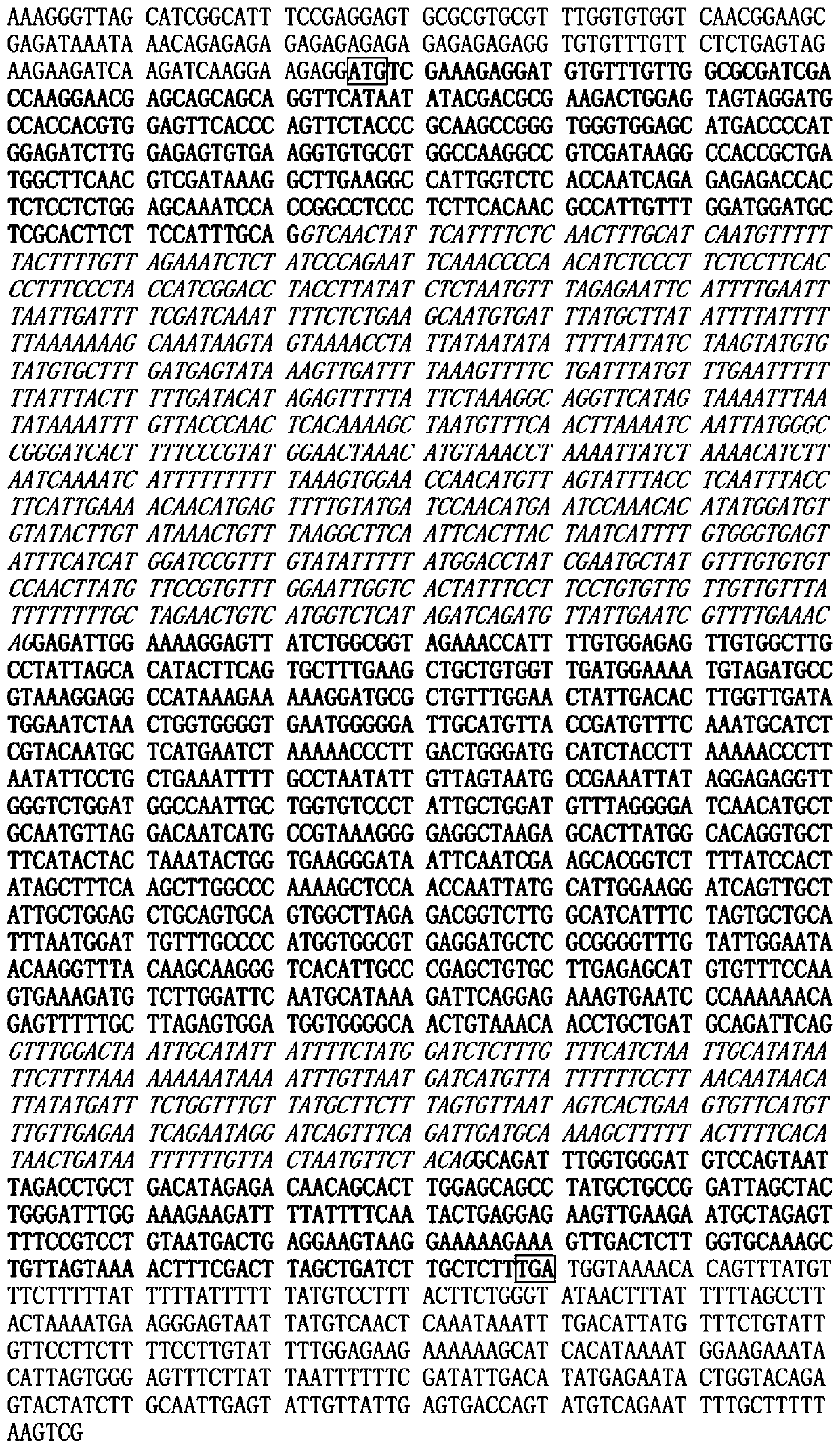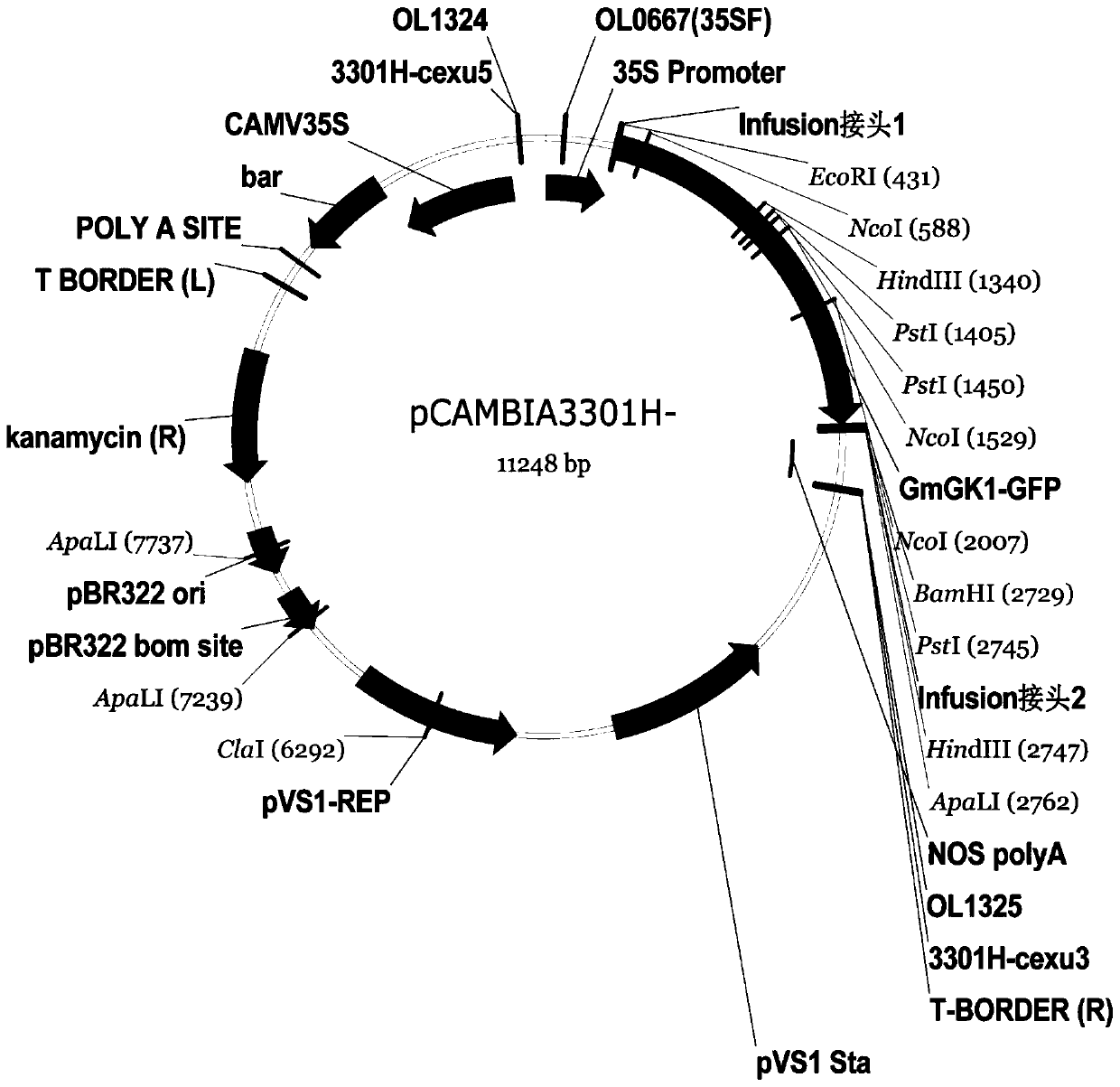Application of glycine max cuticular wax synthetic gene or protein thereof
A protein and vegetable wax technology, applied in the field of genetics and breeding, can solve the problems of changing the proportion of wax components and affecting horny development, etc., and achieve the effects of improving drought stress resistance, disease resistance, and defense against mechanical damage.
- Summary
- Abstract
- Description
- Claims
- Application Information
AI Technical Summary
Problems solved by technology
Method used
Image
Examples
Embodiment 1
[0056] Example 1. Isolation and structural analysis of GmGK1 gene in soybean
[0057] (1) Isolation of genes
[0058] The mRNA was isolated from the young leaves of the soybean variety - Hedou 12, and the first strand of cDNA was synthesized using the mRNA as a template and Oligo(T)17 as a primer. Then, using the first strand of the cDNA as a template, primers (5'-ATGTCGAAAGAGGATGTGTTTG-3') and primers (5'-TCAAAGAGCAAGATCAGCTAAGTC-3') were used for PCR amplification, and a 1560bp cDNA fragment of a GmGK1 gene was obtained , cloned into pGEM T Easy vector (TaKaRa Company) and named pGEM T Easy-GmGK1.
[0059] The GmGK1 CDS sequence contained in pGEM T Easy-GmGK1 is shown in SEQ ID NO: 1, with a total of 1560 bp, which encodes a protein of 519 amino acids (SEQ ID NO: 2).
[0060] (2) Gene structure analysis
[0061] The young leaves of Williams82 were used as materials to extract the DNA therein, and then the genomic DNA was used as a template to amplify the fragment of the G...
Embodiment 2
[0062] Example 2. Construction of soybean GmGK1 gene sense expression vector
[0063] The CDS of GmGK1 and the CDS of green fluorescent protein GFP were fused forwardly into the plant expression vector pCAMBIA3301H (CAMBIA Research Center) to obtain the positive expression vector of GmGK1 with the GFP tag. The full length of the vector is 11.2Kbp (such as figure 2 ), the resistance in Escherichia coli is kanamycin resistance, and the resistance in plants is glufosinate-ammonium resistance.
Embodiment 3
[0064] Example 3. Agrobacterium-mediated transformation of leguminous plants
[0065] In this example, the explants of the gmgk1 mutant containing the positive-sense expression vector of the GmGK1 regulatory gene were obtained by transforming soybean embryo tips through Agrobacterium-mediated transformation.
[0066] (A) Obtaining of soybean explants
[0067] 10,000 grains of the soybean cultivar Hedou 12 widely planted in the Huanghuaihai region were mutagenized by 250Gy gamma rays. A total of 1298 mutants of more than 900 lines were identified as M2 mutants, and the mutants with shrunken leaves were screened from them. material, phenotypically stable gmgk1 mutants were obtained after planting for 4 generations. The Glyma.07G028600 gene that controls the phenotype of the gmgk1 mutant was successfully identified by crossing the gmgk1 mutant with the distant species Williams82. The gene has a deletion of ten bases of TCTTTTATCC and an insertion of one in the exon A base. The...
PUM
 Login to View More
Login to View More Abstract
Description
Claims
Application Information
 Login to View More
Login to View More - R&D Engineer
- R&D Manager
- IP Professional
- Industry Leading Data Capabilities
- Powerful AI technology
- Patent DNA Extraction
Browse by: Latest US Patents, China's latest patents, Technical Efficacy Thesaurus, Application Domain, Technology Topic, Popular Technical Reports.
© 2024 PatSnap. All rights reserved.Legal|Privacy policy|Modern Slavery Act Transparency Statement|Sitemap|About US| Contact US: help@patsnap.com










